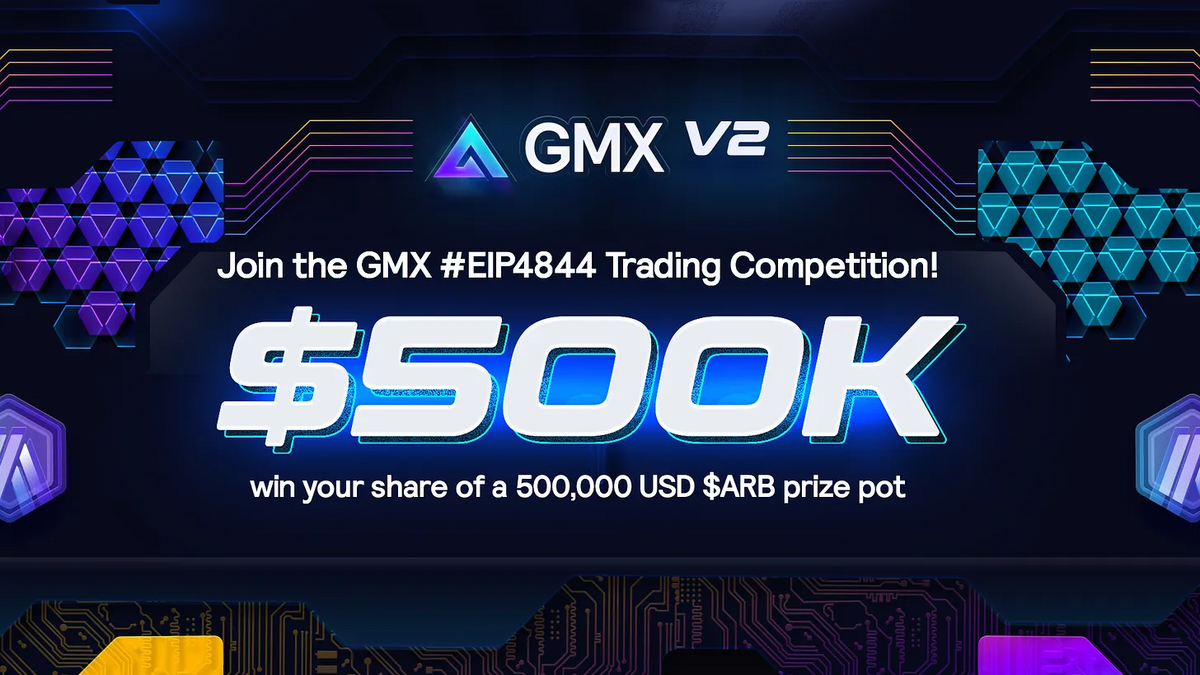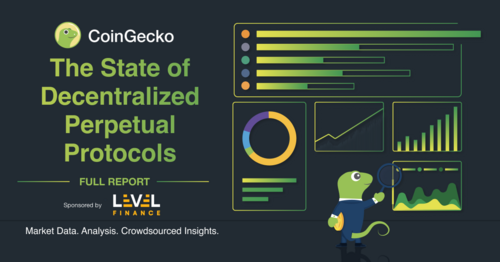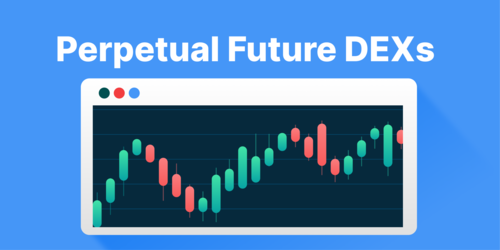Since its launch in September 2021, GMX has released several products aimed at improving cryptocurrency trading and investing.
GMX is a novel cryptocurrency spot and perpetual contract trading platform built first on Arbitrum one – an Ethereum Layer 2 solution and launched later on Avalanche blockchain. GMX is a rebrand from the now deprecated Gambit exchange.
GMX’s decentralized spot trading protocol allows investors to perform seamless cryptocurrency swaps from the comfort of their personal wallets. But, its most popular product is its decentralized perpetual contract trading platform. Perpetual contract traders could use up to 30X leverage on the GMX exchange.
Additional perks of the GMX exchange are an impressive tokenomics and reward system for traders and liquidity providers, low trading and swapping fees, and a superb user experience thanks to the high-throughput blockchain technology and optimized protocols that power the platform.
To better appreciate the rest of this article, a basic understanding of futures contracts, leveraging, and perpetual contracts are required…
Understanding Futures Contract and Leveraging
Futures contract
Investors take advantage of cryptocurrency’s price fluctuation by betting on the progression or regression of assets through several means.
Futures trading and spot trading are the most common means. In spot trading, an investor buys and holds a crypto asset with the hopes of selling them when its value appreciates. Future trading differs in a number of ways…
By entering a ‘futures contract’, two parties agree to sell or purchase an asset at a pre-determined price and time in the future. In contrast to spot trading, traders in a futures contract are not required to hold the asset. Rather, they can bet on a selected asset using another asset.
The trade is executed at the stated time and not instantly like in spot trading. The asset used in the futures contract is known as collateral. A trader in a futures contract either takes a long or short position.
A long position means that the trader is placing his bets on the future increase in the value of the asset. A short position is a bet on the regression of the asset.
When the asset's value appreciates, the trader in a long position makes profits while the short position loses. The reverse is the case when the asset drops in value. Depending on the extent of the drop or rise in value a future trader gets liquidated if they fail to increase their collateral or close their position to stop their losses.
Leveraging allows futures contract traders to place their bets with amounts higher than their collateral. For instance, a trader who enters a 10X leveraged futures contract position can place a $100 bet on an asset using a $10 collateral.
Read more: Leverage Crypto Trading: How Does It Work?
To exercise this leverage, traders borrow funds from a designated pool and swiftly use the borrowed funds to place their bets. This pool is mostly owned by a single entity (the trading platform in most cases) and controlled by the trading platform.
Perpetual contract
Perpetual contracts are a special form of futures contracts.
The major difference between perpetual contracts and normal futures contracts is contract expiration. Whilst the traditional form of futures contracts has a stated expiry date after which the contracts can no longer be traded, perpetual contracts have no expiry period. Thus, a trader’s position is valid for as long as they leave it open and maintain it.
Compared to other forms of futures contracts, the price of perpetual contracts is tightly maintained with the spot price of the traded asset. The perpetual contract price could stray away from the spot price in extreme market conditions, but this happens less often than seen in traditional futures contracts.
To further maintain the price of perpetual contracts with that of the spot markets, a funding payment is made. This payment is made between the traders in a contract and is guided by the difference between the Index price (average spot price) and the price of the perpetual contract.
When the price of the perpetual contract is higher than the average price of the asset on spot markets, funding is positive in value, traders in long positions pay traders in short positions. The reverse is the case when the perpetual contract trades lower than the average spot price, which is when funding is negative in value.
The frequency at which this payment is made is known as the funding rate.
Since perpetual contracts have no expiry, the profit or loss will continue to accrue until the trader decides to close the trade or the exchange liquidates the trader’s account in cases of unmaintained losing trades.
How Does GMX Work?

GMX isn’t the first decentralized perpetual contract trading platform, but it is unique in several ways. It shifts the paradigm with extended leverage and a decentralized, multi-purpose liquidity pool.
At the core functionality of the GMX exchange is a community-owned and ‘unionized’ liquidity pool – the GLP pool. The GLP pool serves the spot trading and perpetual contract trading facilities. Assets in the GLP pool are contributed by the community, like in the liquidity pool system on other decentralized exchanges.
The GLP pool is unique in two ways:
- Users can contribute single assets to the GLP pool. The pool is used by the Automated Market Maker (AMM) to serve the decentralized spot exchange (swap).
- The leverage trading algorithm also uses the GLP pool to service loan requests by traders.
Thanks to the 30x leverage availablilty on GMX exchange, perpetual contract traders can borrow up to 30 times the value of their collateral from the GLP pool.
 Source: Messari
Source: Messari
On locking an asset in the GLP pool, users receive GLP tokens. The GLP token represents their stake in the GLP pool. The GLP pool currently holds over $300 million worth of assets on Avalanche and Arbitrum network.
The GLP token gives its holders numerous advantages (read the next section for more details on the GLP token).
GMX exchange uses Chailink’s Decentralized Oracle Network (DON) to provide price feeds to the spot and perpetual contract trading protocols. The price feeds are optimized to provide accurate and timely price data, this prevents irregular changes in liquidation prices.
 Source: GMX
Source: GMX
Over 85,000 traders have used GMX decentralized perpetual contract trading platforms on Arbitrum and Avalanche network at the time of this writing.
GMX and GLP Tokens
GMX exchange operates a dual token system. The GMX and GLP tokens are the native tokens of the GMX ecosystem.
GMX token is the Governance and main utility token of the GMX ecosystem.
Community members can create proposals or vote on submitted proposals using the GMX token. GMX token was also designed to aid the financial growth of the GMX ecosystem and reward investors and users of the platform.
GMX token staking program offers holders an opportunity to earn passive income through their tokens. Holders can stake their GMX tokens and earn interests of over 10% APR (at the time of this writing) on Arbitrum one and Avalanche blockchain. 30% of the fees generated on the platform are used to reward stakers.
Staking rewards include ETH or AVAX (depending on where the token is staked), EscrowedGMX (esGMX), and Multiplier Points.esGMX tokens are vested for a one-year period after which they can be redeemed for GMX tokens can be redeemed for GMX tokens. While vested, esGMX tokens are staked and are eligible for the same rewards as staked GMX tokens. esGMX tokens are not transferable.
Multiplier Points boost interest earned on staked GMX tokens. Multiplier points have a 100% APR. For instance, staking 100 GMX tokens for one year earns you 100 Multiplier points. Multiplier points earn the same ETH and AVAX as GMX tokens staked on Arbitrum or Avalanche blockchain respectively. When the staked GMX tokens are unstaked, the multiplier points are burnt.
 Source: CoinGecko
Source: CoinGecko
The max supply of GMX token is 13,250,000. About 7.5% of the supply was distributed to presale participants. 15% of the total supply is allocated to the Floor Price Fund. The Floor Price Fund is used to maintain the GLP pool and the Ethereum reserves for staking reward and trading.
Following the GMX exchange’s rebranding from Gambit and merging XVIV tokens, over 45% of the GMX token supply is expected to be absorbed by old Gambit and XVIX holders migrating their tokens to GMX. 15% of the total supply has been added to the GLP pool while about 2% of the total supply will be used for further marketing of the GMX exchange.
Check out the GMX token distribution scheme in detail.
GLP token is structured as a tokenized audit of assets on the GMX network. GLP tokens are minted using any of the approved assets on the GMX exchange. Users lock their assets and mint GLP tokens according to the prevailing conditions as specified by the GLP token distribution algorithm.
The GLP pool services leverage loan requests in the traders’ token of choice. Traders can borrow any asset in the pool but trading profits from short positions are paid out in USDC and profits from long positions are paid out in ETH or BTC. Fees from trading are reserved for GMX and GLP staking rewards.
With this structure, the GLP pool’s return shrinks as traders make profits and grow when traders make losses and trade more frequently.
GLP tokens are not tradable and can only be used to redeem the assets locked during the minting process. Minted GLP tokens are automatically eligible for staking rewards of about 25% interest on Avalanche and 31% interest on Arbitrum. GLP holders also receive esGMX rewards and 70% of the fees generated on any of GMX’s products.
Step-by-Step Guide to Trading on GMX
GMX’s trading platform features a comprehensive user interface. To use any of GMX’s trading facilities, first visit the GMX website.
 Click ‘Connect Wallet’ to start the setup process for your wallet. If you are yet to add the Arbitrum or Avalanche chain, follow the prompt after connecting your wallet or learn how to add Avalanche network and Arbitrum to your MetaMask wallet.
Click ‘Connect Wallet’ to start the setup process for your wallet. If you are yet to add the Arbitrum or Avalanche chain, follow the prompt after connecting your wallet or learn how to add Avalanche network and Arbitrum to your MetaMask wallet.

You can switch between Arbitrum and Avalanche networks by clicking the three dots at the top right corner of your device. Ensure that you are on the intended network before proceeding.
Using GMX Swap Feature

To perform decentralized token swaps using GMX exchange, click on ‘Swap’ on the right corner of the screen.
Click on the caret to select the swap pair. Enter the amount of token you wish to swap and complete the process.
Trading Perpetual Contract on GMX Exchange
To trade perpetual contracts on GMX, select the pair you wish to trade and click ‘Long’ or ‘Short’ depending on the direction of your trade.

Set the parameters of your trade: the asset to be used as your collateral, the amount you wish to pay, and the asset you are betting on. Drag the slider to set your leverage.
Check your entry price, liquidation price, and entry fee. If satisfactory, confirm your position.
Tracking and Managing your Position
Once you confirm your position, you can access it from the Position tab. Click ‘Position’ to view active trades and manage your trades.
Click ‘Close’ if you intend to close your position.
 To set a stop-loss or take-profit order, click ‘Trigger’ and set a price at which your trade closes automatically.
To set a stop-loss or take-profit order, click ‘Trigger’ and set a price at which your trade closes automatically.
How to Buy GMX Token
GMX token is currently trading on several decentralized and centralized exchanges. You can buy GMX on centralized exchanges like Bybit, CoinEx, and MEXC global, or decentralized exchanges like Trader Joe on Avalanche blockchain and Uniswap on Arbitrum.
Find out the complete list of markets here.
Final Thoughts
With over $60 billion in total trading volume and almost 100,000 active users (at the time of this writing), GMX is putting up numbers that are almost as impressive as its technology. It is swiftly building itself a reputation in the vast derivatives market.
In the traditional financial space, the derivatives market dwarfs the size of the stock market by controlling almost 10 times the size of the global stock market. GMX exchange aims to tap into this massive market and has seen incredible growth already.
Apart from an opportunity to benefit from the fluctuating values of crypto assets, GMX hands traders and investors a well-developed platform to perform an array of financial activities. Investing, trading, and passive earning.
In one platform, it serves three hierarchies. An exchange platform built on low-fee blockchains and Layer-2 solutions allow cryptocurrency investors to rotate their assets and pay pocket-friendly fees in the process. With the numerous passive income opportunities on the GMX exchange, crypto asset owners can simply lock their assets and ‘make their money work for them’ while enriching the GMX ecosystem.
The rave around GMX’s perpetual contract feature is reasonable. To complement a more secured and interactive way of trading ‘timeless futures contract’, GMX’s 30X leverage goes many steps further from the current leverage limits on other decentralized and centralized perpetual contract trading platforms. By doing so, GMX widens opportunities for traders.
However, be informed that cryptocurrency trading is always a risky venture. An advanced understanding of futures trading is important. Also, exercise caution while interacting with decentralized applications.
To learn more about cryptocurrency and blockchain, be sure to check out CoinGecko Learn!

Joel is deeply interested in the technologies behind cryptocurrencies and blockchain networks. In his over 7 years of involvement in the space, he helps startups build a stronger internet presence through written content. Follow the author on Twitter @agboifesinachi





 Or check it out in the app stores
Or check it out in the app stores
